
The scent of warm pine resin fills the mountain air as a golden-brown figure darts between the massive trunks of ponderosa pines. This medium-sized chipmunk, with its distinctively bright coloration and bold personality, represents one of the Pacific Northwest’s most charismatic forest dwellers—the Yellow-pine Chipmunk.
The Yellow-pine Chipmunk (Neotamias amoenus) is a medium-sized western chipmunk distinguished by its bright golden-brown to yellowish coat and prominent facial stripes. Weighing 1.5-3 ounces and measuring 8-10 inches total length, they inhabit montane coniferous forests from 2,000-9,000 feet elevation across the northwestern United States and southwestern Canada.
| Attribute | Details |
|---|---|
| Scientific Name | Neotamias amoenus |
| Size | 8-10 inches total length (4-5 inches body) |
| Weight | 42-85 grams (1.5-3 oz) |
| Lifespan | 3-6 years wild, up to 8 years maximum |
| Habitat | Montane coniferous forests, 2,000-9,000 feet elevation |
| Diet | Omnivore: conifer seeds, nuts, berries, fungi, insects |
| Activity | Diurnal (most active early morning and evening) |
| Conservation Status | Least Concern (stable populations) |
Physical Description
The Yellow-pine Chipmunk’s vibrant coloration immediately sets it apart from other western chipmunk species, including the smaller Least Chipmunk found at higher elevations. Their medium build and distinctive golden hues reflect adaptations to the warm, sun-dappled environments of montane pine forests.
Five dark stripes alternate with four lighter stripes running from nose to rump, following the classic chipmunk pattern. However, their overall coloration tends toward bright golden-brown, yellowish-brown, or rusty tones that give them their common name. The central dark stripe runs along the spine, while lateral stripes follow the body contours with remarkable clarity and definition.
Facial striping appears particularly prominent, with dark stripes extending from the nose through the eyes and continuing past the ears. These facial markings are more pronounced than those seen in many other western chipmunks, creating a distinctive masked appearance that aids in species identification. The light stripes on the face typically appear bright white or pale yellow.
Their coat varies seasonally and geographically, with summer pelage showing the brightest golden tones. Northern populations often display more subdued coloration with grayer undertones, while southern populations maintain the characteristic bright yellow-brown appearance. Unlike the consistent gray-brown tones of species covered in our Complete North American Squirrel Species Guide, Yellow-pine Chipmunks show remarkable color intensity.
The tail measures approximately 40% of their total body length and displays alternating dark and light bands with a pronounced black tip bordered by white or yellow edges. The underside typically shows bright orange-brown or rust coloration that extends onto the belly and inner legs.
Sexual dimorphism remains subtle, though males tend to be slightly larger during breeding season. Both sexes possess well-developed cheek pouches capable of expanding dramatically when filled with seeds—an essential adaptation for their food-hoarding lifestyle in forests with irregular mast production cycles.
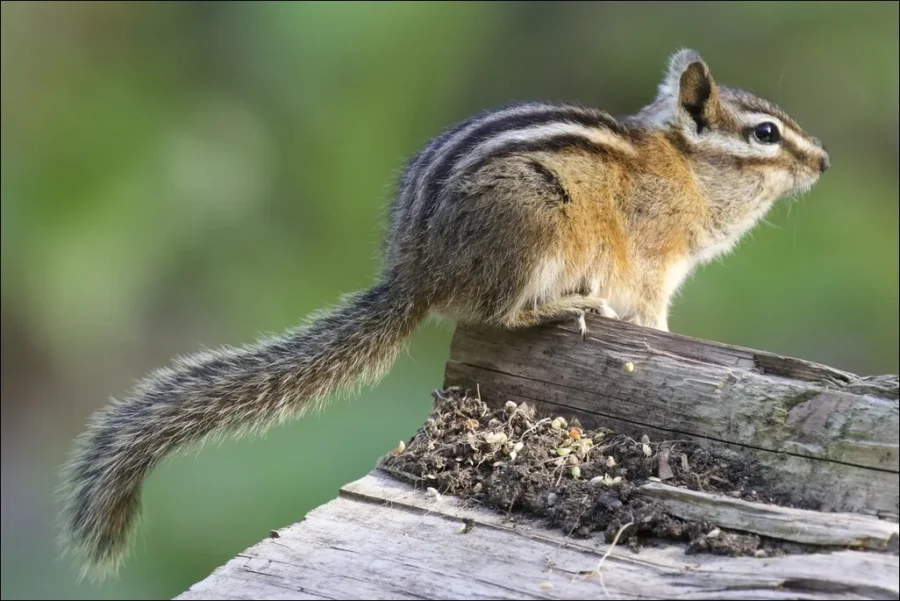
Body proportions reflect their semi-arboreal lifestyle, with relatively long limbs and strong claws adapted for climbing. While not as specialized for arboreal life as the Northern Flying Squirrel, they demonstrate considerable climbing ability when accessing food sources or escaping predators.
Habitat and Distribution
Yellow-pine Chipmunks occupy montane coniferous forests across the northwestern United States and southwestern Canada, with their range extending from southern British Columbia south through the Cascade Range, Sierra Nevada, and Rocky Mountains to northern California, Nevada, Utah, and Colorado. This distribution reflects their specialization for mid-elevation forest ecosystems.
Their preferred habitats center around ponderosa pine forests, Douglas fir stands, and mixed coniferous woodlands between 2,000-9,000 feet elevation. Unlike the high-elevation specialists such as the Least Chipmunk, Yellow-pine Chipmunks show strong preferences for warm, south-facing slopes where large-diameter conifers create open understory conditions.
Ponderosa pine ecosystems provide ideal habitat conditions with their characteristic open canopy structure, abundant cone production, and diverse understory plant communities. These forests offer the combination of food resources, denning sites, and thermal conditions that Yellow-pine Chipmunks require for successful reproduction and winter survival.
Douglas fir forests represent secondary habitat, particularly in areas where fire suppression has created denser forest conditions. However, they show preferences for forest edges, openings, and areas with structural diversity rather than dense, uniform stands. Their habitat selection contrasts with the diverse ecosystem use seen in the Eastern Chipmunk.
Elevation preferences vary with latitude and local climate conditions. Northern populations typically occur at lower elevations (2,000-6,000 feet), while southern populations may extend up to 9,000 feet where suitable forest conditions persist. Climate change may be shifting these elevation preferences upward over time.
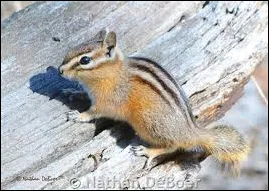
Forest edge habitats receive particular use, including areas adjacent to meadows, clearcuts, or natural openings. These transitional zones provide access to diverse food resources while maintaining proximity to forest cover needed for denning and predator avoidance. However, they avoid the extensive open areas preferred by some ground squirrel species.
Rock outcrops, fallen logs, and brush piles within forest environments provide essential denning sites and territorial landmarks. Their burrow systems often utilize these natural features for structural support and concealment. The availability of suitable denning sites frequently limits population density in otherwise suitable habitat.
Geographic isolation has created distinct regional populations with varying habitat preferences and behavioral adaptations. Cascade Range populations differ subtly from Rocky Mountain populations in their response to local forest conditions and food resource availability.
Territory sizes typically range from 0.5-2 acres depending on habitat quality and food abundance. High-quality ponderosa pine forests with abundant cone production support higher population densities than marginal habitats with limited food resources.
Diet and Feeding Behavior
The Yellow-pine Chipmunk’s diet reflects their specialization for coniferous forest environments, with feeding strategies adapted to exploit the seasonal abundance of tree seeds and diverse forest understory resources. Their food preferences show distinct seasonal patterns that align with resource availability in montane ecosystems.
Conifer seeds form the cornerstone of their diet, particularly ponderosa pine seeds, Douglas fir seeds, and various fir species seeds depending on local forest composition. Their timing of foraging activities closely follows cone ripening schedules, with intense seed-gathering periods during late summer and early fall. Unlike the more generalized diet of the Mexican Fox Squirrel, Yellow-pine Chipmunks show strong preferences for specific conifer species.
Pine nuts represent premium food resources when available, providing high-energy content essential for winter survival. They demonstrate remarkable efficiency in extracting seeds from cones, often working systematically through individual cones to remove every viable seed. Their cheek pouches allow transport of 50-100 seeds per foraging trip back to storage sites.
Deciduous tree seeds supplement their conifer-focused diet, particularly maple seeds, oak acorns (where available), and mountain ash berries. These resources provide dietary diversity and backup food sources during years when conifer seed production fails due to drought, disease, or other factors.
Understory shrub berries become important during summer months, including huckleberries, elderberries, serviceberries, and thimbleberries. These fruits provide essential vitamins and natural sugars that supplement their primarily seed-based diet. Berry consumption timing coincides with peak ripening periods and fat accumulation before winter.
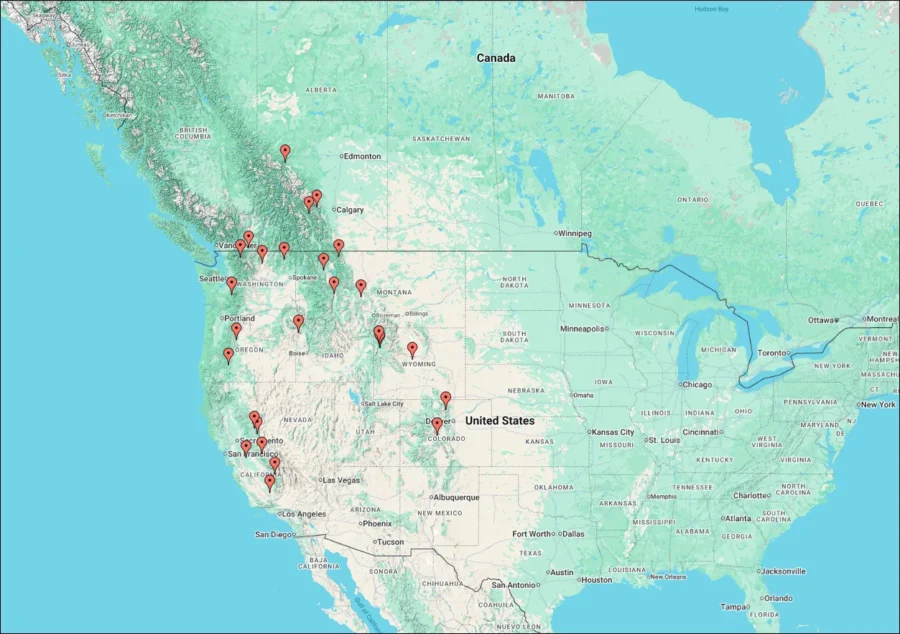
Fungal consumption includes both above-ground mushrooms and underground truffle species that form mycorrhizal relationships with forest trees. Their ability to locate and consume various fungi provides access to proteins and nutrients often limited in plant-based diets. This behavior parallels feeding strategies seen in other forest-dwelling species.
Insect protein becomes particularly important during breeding season and periods of rapid growth. They actively hunt caterpillars, beetles, ants, and other arthropods, with insect consumption potentially comprising 10-20% of their diet during peak abundance periods. Their insectivory helps control forest pest populations.
Green vegetation consumption occurs primarily during spring when cached food supplies run low and new growth provides fresh nutrients. They consume grass shoots, wildflower leaves, and young tree shoots to bridge the gap between winter stores and new seed production.
Water requirements are met largely through their food, though they readily drink from streams, puddles, or dewdrops when available. Their kidney efficiency allows survival in relatively dry forest environments where surface water may be scarce during summer months.
Food caching represents their most critical survival behavior, with individual chipmunks storing 4-6 pounds of seeds and nuts in underground chambers. Cache locations are carefully selected and remembered, with multiple storage sites reducing the risk of total loss to competing animals or environmental factors.
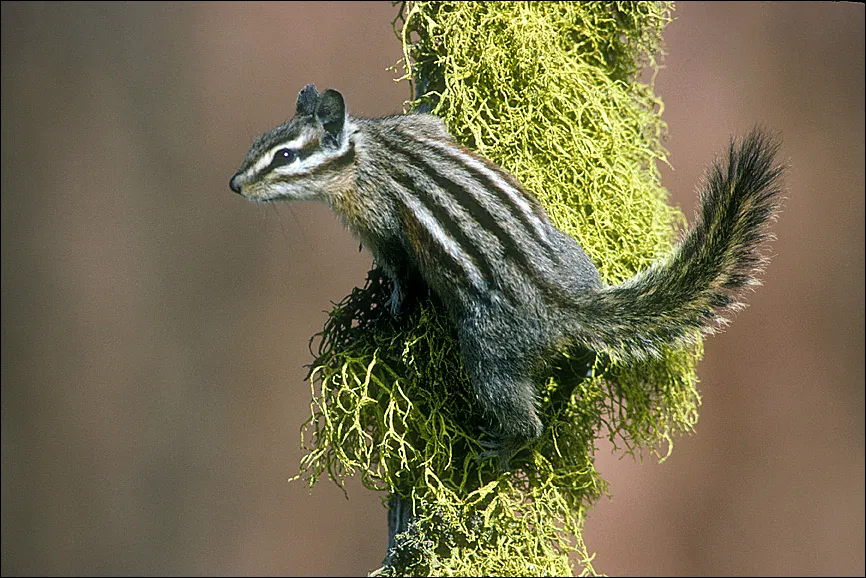
Reproduction and Life Cycle
Yellow-pine Chipmunk reproductive biology reflects adaptations to montane forest environments with distinct seasonal cycles and variable resource availability. Their breeding strategies balance reproductive investment against the environmental uncertainties characteristic of mountain ecosystems.
Breeding season typically begins in April or May depending on elevation and local climate conditions, with timing closely correlated to snowmelt and emerging food resources. Higher elevation populations may not breed until June, while lower elevation populations can begin reproductive activities in early April during favorable years.
Mating systems involve multiple partnerships for both males and females during the brief breeding season. Males emerge from winter dormancy first, establishing territories and competing for access to females through aggressive displays, vocalizations, and physical confrontation. Territory quality often determines male mating success more than individual size or condition.
Courtship involves elaborate chase sequences, scent marking, and vocal communications that can last several days before successful mating occurs. Males may travel significant distances beyond their normal territories to locate receptive females, particularly in areas with low population density.
Gestation lasts approximately 30-32 days, with females giving birth to 3-6 young in carefully prepared underground nest chambers. Litter sizes correlate with maternal condition and local food availability, with well-fed females in high-quality habitat producing larger litters than those in marginal conditions.
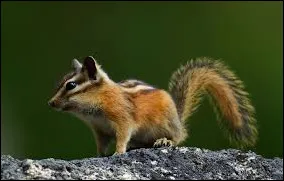
Newborn Yellow-pine Chipmunks arrive hairless, blind, and completely dependent on maternal care. Their development schedule reflects the compressed growing season available in montane environments, with rapid growth rates ensuring independence before harsh weather arrives.
Nest chamber construction involves extensive preparation, with females creating insulated chambers lined with soft plant materials including grass, leaves, and shredded bark. These chambers are positioned within the burrow system to maintain optimal temperatures and provide protection from predators and weather.
Eyes open at approximately 30-35 days, and young begin exploring their burrow system shortly afterward. Weaning occurs at 6-8 weeks, though young may remain with their mother until late summer while learning essential foraging and caching skills.
Juvenile dispersal typically occurs in late summer or early fall, with young animals establishing their own territories before winter arrives. This timing allows them to accumulate food caches and prepare burrow systems before entering their first winter dormancy period.
Sexual maturity is reached during their second year, though some females may breed during their first year if they achieve sufficient body condition. Early breeding success often depends on territory quality and the individual’s ability to accumulate adequate food reserves.
Adult longevity in the wild typically ranges from 3-6 years, with maximum recorded lifespans reaching 8 years under optimal conditions. Survival rates correlate strongly with habitat quality, predation pressure, and weather patterns during critical periods.
Behavior and Social Structure
Yellow-pine Chipmunk social organization centers around individual territories and complex behavioral adaptations for life in montane forest environments. Their behavior patterns reflect both the challenges and opportunities presented by coniferous forest ecosystems with their irregular resource cycles.
Territorial behavior varies seasonally and with resource availability. During peak food abundance periods, territories may be smaller and more intensively defended, while during scarce periods, individuals may expand their ranges or show increased tolerance for neighbors. Territory boundaries are marked through scent glands and vocal displays.
Burrow systems represent sophisticated engineering projects that can extend 10-15 feet in length with multiple chambers serving specialized functions. Construction occurs gradually over several seasons, with chipmunks continually expanding and modifying their underground homes. These systems differ significantly from the simpler burrows of species like the Southern Flying Squirrel.
Daily activity patterns follow a bimodal schedule with peak foraging during early morning and late afternoon hours. This timing helps them avoid midday heat during summer while maximizing foraging efficiency during optimal temperature conditions. Their diurnal habits contrast with the nocturnal behavior of flying squirrels in the same forests.
Communication systems include a diverse repertoire of vocalizations adapted to forest environments. Their calls include sharp alarm notes for aerial predators, longer chatter sequences for ground threats, and softer contact calls for social interactions. These vocalizations carry well through forest understory vegetation.
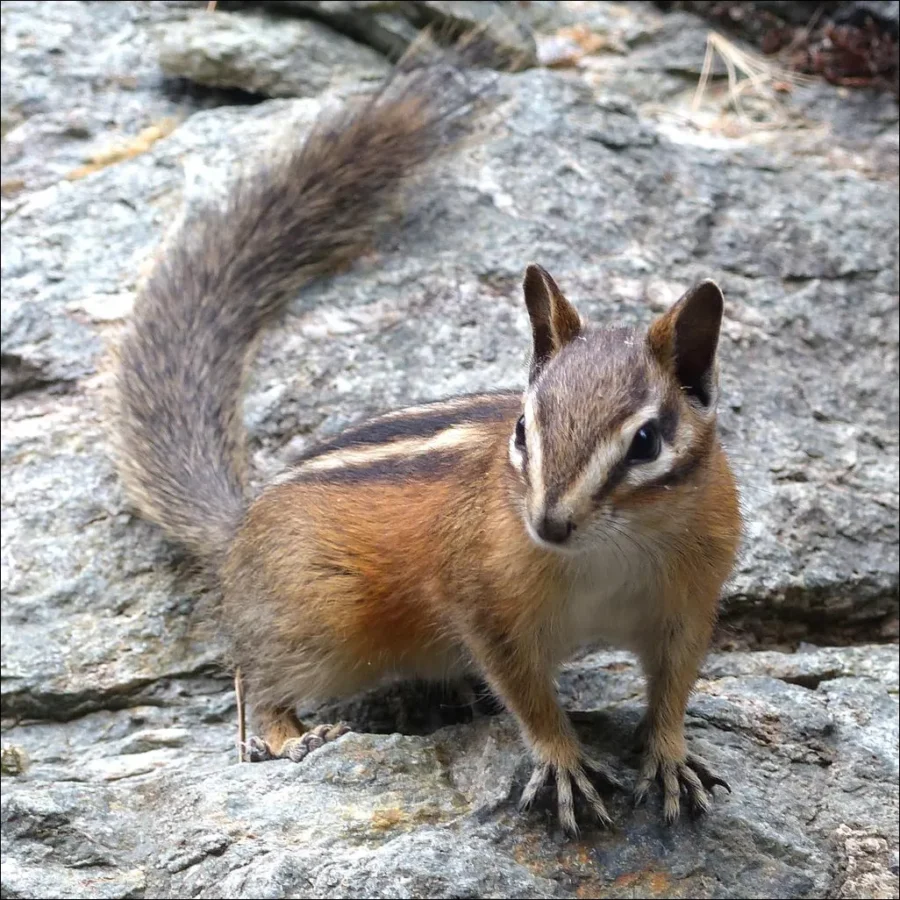
Climbing behavior represents an important adaptation that allows access to arboreal food sources and escape routes from ground-based predators. While not as accomplished as true arboreal species covered in our squirrel species guide, they readily ascend trees to heights of 30-40 feet when necessary.
Winter dormancy patterns vary with elevation and local climate conditions. They enter torpor during the coldest months but remain less dormant than high-elevation species, periodically emerging to feed on cached foods during warm spells. This intermediate dormancy strategy reflects their mid-elevation forest habitat.
Social interactions beyond breeding are generally limited, though individuals may show tolerance in areas with concentrated food resources such as abundant cone crops. Temporary feeding aggregations may form around particularly productive trees, though these associations remain loose and temporary.
Grooming occupies significant daily time, particularly important for maintaining fur condition in forest environments with high parasite loads. Their flexible spine and specialized grooming techniques help maintain the insulation properties essential for temperature regulation in variable mountain climates.
Play behavior is observed primarily in juveniles during their first summer, helping develop motor skills and escape responses essential for survival. Adult play is rare but may occur during periods of abundant food and reduced stress.
Interaction with Humans
Yellow-pine Chipmunks frequently encounter humans throughout their range, particularly in popular recreation areas where camping, hiking, and forestry activities overlap with their forest habitats. Their responses to human presence reflect both their natural wariness and their adaptability to environmental changes.
In developed recreation areas, some populations become habituated to human presence and may approach campsites or picnic areas seeking food opportunities. Their bold personality and attractive appearance make them popular with visitors, though feeding wildlife creates dependency relationships harmful to natural behavior patterns.
Camping area interactions often involve chipmunks investigating campsites for food scraps, accessing improperly stored supplies, or establishing temporary territories near consistent food sources. Their climbing abilities allow access to hanging food bags or elevated storage areas, requiring careful food management by campers.
Forestry operations impact Yellow-pine Chipmunk populations through habitat modification, with effects varying depending on harvest methods and post-treatment conditions. Selective logging that maintains forest structure may benefit populations by creating edge habitats, while clearcut operations typically reduce habitat suitability for several years.
Research opportunities make them valuable subjects for ecological studies examining forest ecosystem dynamics, climate change impacts, and wildlife responses to forest management practices. Their habitat specificity and conspicuous behavior facilitate population monitoring and behavioral research.
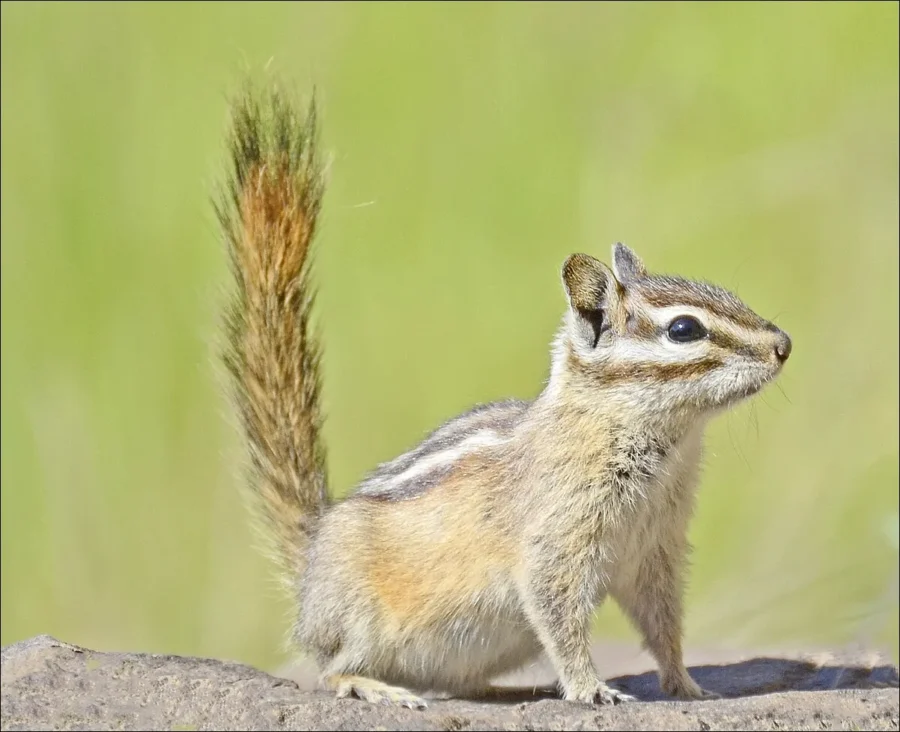
Cabin and home interactions occur in mountain communities where development occurs within their natural habitat. They may establish burrows under buildings, access stored goods, or utilize landscaping features for food and cover. Most conflicts involve minor property damage rather than serious problems.
Educational value stems from their accessibility and engaging behaviors, making them excellent subjects for environmental education programs. Their diurnal habits and forest habitat associations provide opportunities for teaching forest ecology concepts and wildlife observation skills.
Photography subjects rank among the most sought-after for wildlife enthusiasts visiting western forests. Their photogenic appearance, predictable behavior patterns, and tolerance of careful approach provide excellent opportunities for capturing natural behaviors without causing significant disturbance.
Disease transmission risks remain low, as Yellow-pine Chipmunks rarely carry diseases communicable to humans. However, they may harbor fleas, ticks, and other parasites that could potentially transmit pathogens, making direct contact inadvisable.
Fire management implications include their role as both seed dispersers and potential fire spread vectors during extreme conditions. Their caching behavior may help forest regeneration after disturbances, while their burrow systems can provide survival refugia during low-intensity fires.
Conservation Status
Yellow-pine Chipmunk populations currently maintain stable status across most of their range, though localized concerns exist in areas experiencing significant habitat changes or extreme climate impacts. Their dependence on specific forest types makes them vulnerable to large-scale environmental changes affecting montane ecosystems.
Climate change represents a significant long-term challenge, particularly through its effects on forest composition and fire regimes. Warming temperatures may drive populations to higher elevations where suitable habitat becomes increasingly limited. Changes in precipitation patterns could affect cone production cycles critical for population success.
Forest management practices significantly influence habitat suitability through their effects on forest structure, species composition, and understory development. Fire suppression policies that create unnaturally dense forests may reduce habitat quality, while some logging practices can eliminate essential habitat components.
Wildfire impacts show complex relationships with population success. Low-intensity fires that maintain open forest conditions may benefit populations by preserving their preferred habitat structure, while severe fires that eliminate forest cover can locally extirpate populations. Climate change is increasing fire severity and frequency in many areas.
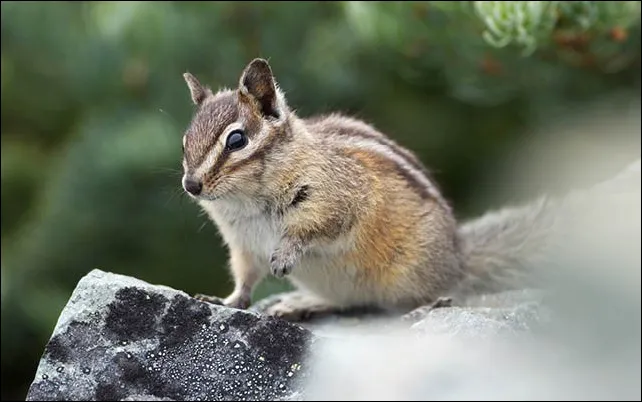
Development pressure affects populations in areas experiencing urban and recreational expansion into mountain forests. Habitat fragmentation, increased human disturbance, and introduction of domestic predators can reduce population viability, particularly in isolated mountain communities.
Disease outbreaks occasionally impact local populations, though comprehensive monitoring data remains limited. Emerging infectious diseases and parasite loads may increase under changing environmental conditions or increased population densities around human developments.
Regional population trends vary across their range, with some areas showing stability while others experience gradual declines. Monitoring efforts focus on indicator populations in key habitats and areas experiencing rapid environmental change.
Research priorities include understanding population responses to changing fire regimes, forest management effects on habitat quality, and genetic connectivity between fragmented populations. Long-term demographic studies provide essential baseline data for conservation planning.
Management recommendations emphasize maintaining forest diversity, preserving habitat connectivity, and implementing adaptive management strategies that account for changing environmental conditions. Collaboration between land management agencies, researchers, and local communities enhances conservation effectiveness.
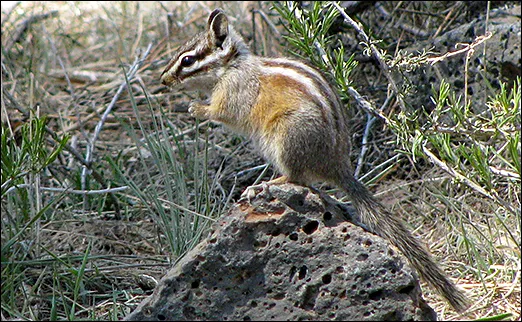
How to Help Yellow-pine Chipmunks
Supporting Yellow-pine Chipmunk populations requires understanding their specific habitat needs and implementing conservation practices appropriate for montane forest ecosystems. Individual actions can contribute significantly to their long-term survival, particularly in areas experiencing development or management pressures.
Habitat protection begins with supporting forest conservation efforts that maintain the structural diversity essential for Yellow-pine Chipmunk success. Participate in public land management planning processes and advocate for policies that preserve mature forest conditions while allowing natural disturbance processes.
Native forest restoration benefits chipmunks by maintaining natural forest composition and structure. Support or participate in reforestation projects using native tree species, particularly ponderosa pine and Douglas fir in appropriate elevation zones. Avoid planting non-native species that may alter ecosystem dynamics.
Fire management advocacy supports natural fire regimes that maintain the open forest conditions preferred by Yellow-pine Chipmunks. Support prescribed burning programs and forest thinning projects that reduce catastrophic fire risk while preserving habitat quality.
Responsible recreation practices minimize disturbance to chipmunk populations in forest recreation areas. Follow Leave No Trace principles, secure food storage properly, avoid feeding wildlife, and maintain respectful distances from active burrow sites. Choose established trails and campsites to minimize habitat fragmentation.
Forest stewardship on private lands can significantly benefit local populations. Maintain mature trees, preserve fallen logs and brush piles that provide denning sites, and avoid extensive forest clearing during breeding season. Consider forest management practices that maintain structural diversity.
Pet management becomes crucial in mountain communities where domestic cats threaten chipmunk populations. Keep cats indoors or in enclosed areas, particularly during breeding and juvenile dispersal periods. Supervise dogs in forest areas to prevent harassment of wildlife.
Chemical reduction protects chipmunks from pesticide exposure and habitat contamination. Avoid using rodenticides, herbicides, and insecticides in forest environments where chipmunks forage. Support organic forest management practices that maintain ecosystem health.
Climate action addresses long-term threats facing montane forest ecosystems. Support renewable energy initiatives, reduce personal carbon footprints, and advocate for climate policies that protect mountain forest habitats from temperature and precipitation changes.
Citizen science participation provides valuable monitoring data for conservation research. Report chipmunk sightings to wildlife agencies, participate in forest health surveys, and document behavioral observations. Detailed records help researchers understand population trends and habitat relationships.
Education and outreach extend conservation benefits beyond individual properties. Share information about Yellow-pine Chipmunk ecology with fellow forest users, support environmental education programs, and advocate for wildlife-friendly forest management practices.
Research support contributes to better understanding of their conservation needs. Support university research programs, participate in long-term monitoring studies, and advocate for funding of wildlife research in forest ecosystems.
Injured wildlife assistance requires contacting licensed wildlife rehabilitators rather than attempting home care. Observe injured animals from a safe distance while arranging professional help and prevent domestic animals from further disturbing injured wildlife.
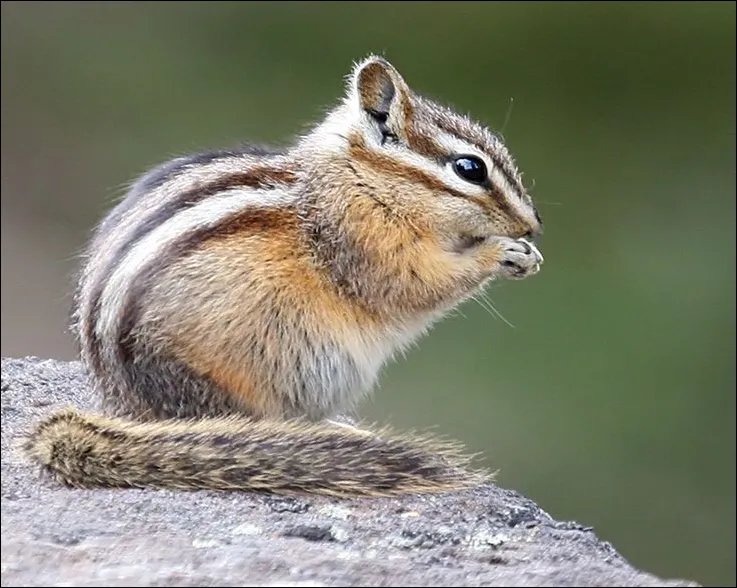
Conclusion
The Yellow-pine Chipmunk represents a remarkable example of specialization within North America’s diverse chipmunk fauna, demonstrating how species can adapt to specific forest ecosystems while maintaining ecological flexibility. Their golden coloration and forest-dwelling lifestyle make them among the most distinctive and appealing members of the western chipmunk community.
Understanding Yellow-pine Chipmunk ecology reveals the intricate relationships between forest structure, resource cycles, and wildlife survival strategies. Their dependence on mature coniferous forests highlights the importance of maintaining diverse forest ecosystems in an era of increasing environmental change and human development pressure.
Their current conservation status provides reasons for optimism, though continued vigilance remains essential as climate change and forest management practices continue reshaping mountain ecosystems. Supporting forest conservation efforts and implementing wildlife-friendly practices can help ensure stable populations across their range.
The species serves as an excellent indicator of forest ecosystem health, with their presence reflecting the maintenance of natural forest processes and structural diversity. By monitoring and protecting Yellow-pine Chipmunk populations, we simultaneously support the broader forest communities that sustain countless other species.
Future conservation success depends on balancing human forest use with wildlife habitat needs, implementing adaptive management strategies that account for changing environmental conditions, and maintaining the habitat connectivity essential for long-term population viability. Through informed stewardship and continued research, we can preserve these remarkable forest dwellers for future generations to study and enjoy.
Their contribution to forest ecosystems through seed dispersal, insect control, and soil aeration underscores the ecological importance of maintaining healthy small mammal populations. As we face increasing environmental challenges, species like the Yellow-pine Chipmunk remind us of the intricate connections that sustain forest communities and the responsibility we share in protecting these natural treasures.
